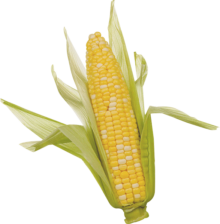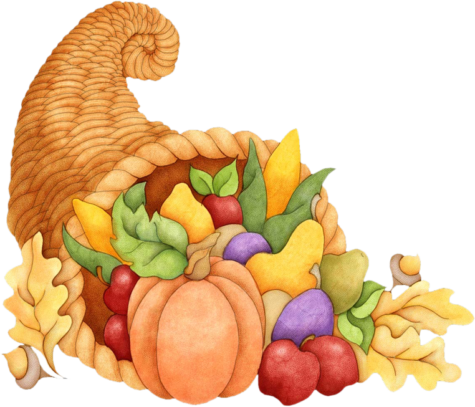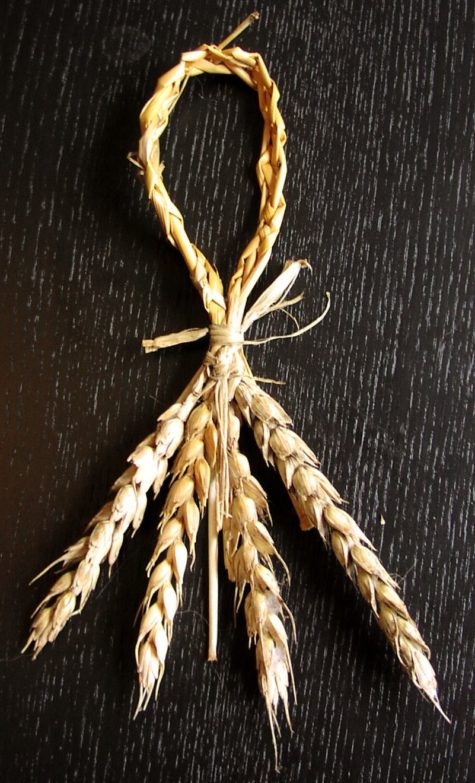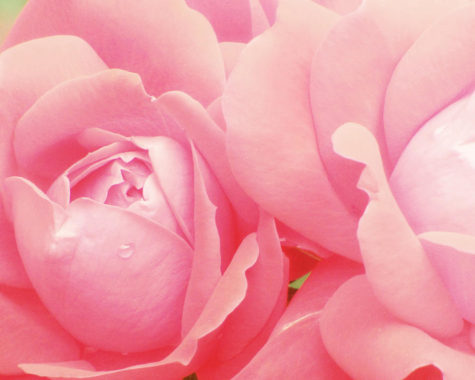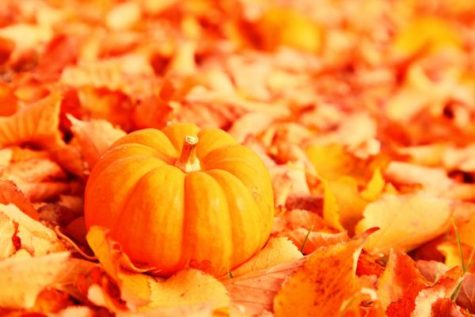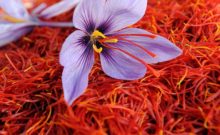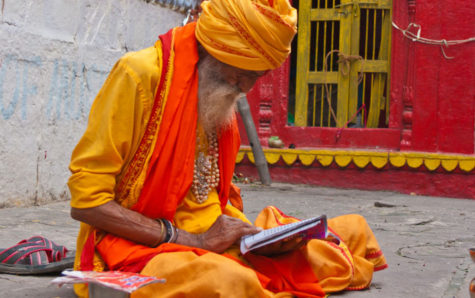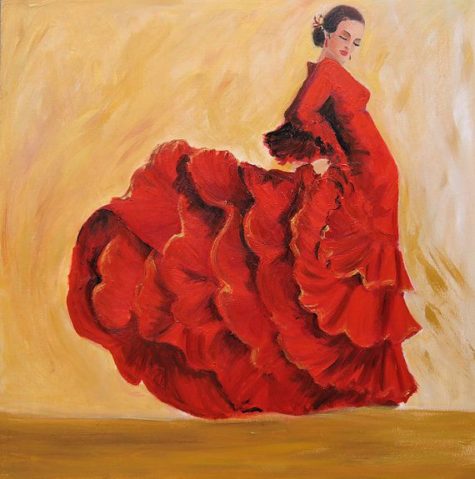Monthly Archives: November 2016
Corn
- Protection
- Luck
- Divination
One of humans most treasured plants, it has always been a great source of nutrition as well as providing medicine. It is closely related to the sun, harvest, health and the earth goddess.
Corn, also known as maize, is the most important food crop of the Americas, cultivated by hundreds of different tribes. Even some tribes who were too nomadic or lived too far north to grow it themselves had corn as part of their diet, since they traded extensively with corn-farming neighbors. Corn is one of the Three Sisters of the northeastern tribes, so called because corn, squash, and beans were traditionally planted together by Native American farmers.
Corn played an important mythological role in many tribes as well– in some cultures Corn was a respected deity, while in others, corn was a special gift to the people from the Creator or culture hero. In addition to its importance as a food source, corn also played a ceremonial role in many tribes, with sacred corn pollen or cornmeal being used as ritual adornment and spiritual offerings.
Corn is a common clan symbol in many Native American cultures. Tribes with Corn Clans include the Muskogee Creek tribe (whose Corn Clan was named Atchialgi or Vce’vlke in the Muskogee language), the Navajo, the Mohave, and the Pueblo tribes of New Mexico (many of whom have multiple Corn Clans such as the Blue Corn Clan and Yellow Corn Clan.) Many tribes, such as the Caddo and the Pueblo tribes, also have a Corn Dance among their tribal dance traditions.
Source: in5d
Cornucopia
Also called the Horn of Plenty, the cornucopia is often depicted in paintings and on friezes where it symbolizes the notion of boundless abundance, as flowers, fruits, sheaves of wheat, and other produce spill out of a hollow horn or a twisting basket woven in the shape of the horn.
The origin of the cornucopia is found in the Greek myth of Amalthea. Amalthea fed the infant Zeus a drink of goat’s milk and was given the brimming goat’s horn as a reward. Sometimes the infant Zeus is depicted being fed the milk from the horn itself.
The cornucopia, as a symbol of a bounteous harvest, is also associated with Ceres, the Goddess of corn, and also with Fortuna, Goddess of good fortune. The idea of a bottomless, bounteous container has similarities to the symbol of the cauldron.
From: The Element Encyclopedia of Secret Signs and Symbols
Brighids Cross
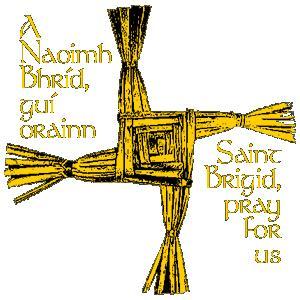 Corn dollies are frequently constructed in the shape of Brighids Cross, and although the symbol itself predates Christianity, it was given the name of the saint in order to ease the passage of acceptance of the new religion.
Corn dollies are frequently constructed in the shape of Brighids Cross, and although the symbol itself predates Christianity, it was given the name of the saint in order to ease the passage of acceptance of the new religion.
The symbol is reminiscent of the ancient Sun symbol, the swastika, its four arms pointing to the cardinal points of the compass. They also represent the Elements, with the point at the center indicating the fifth element of quintessence.
From: Encyclopedia of Secret Signs and Symbols
Corn Dolly
These days, the corn dolly generally gathers dust in gift shops, an innocuous souvenir for tourists in rural areas, particularly in the UK. However, its origins as a powerful magical symbol go back thousands of years to pre-Christian times. It may come as a surprise that the corn dolly hanging on the kitchen wall can trace its roots back to a particularly bloody ritual.
In any agrarian culture, the success of the crops is all-important and in Northern Europe the harvest produce was essential to survival during the winter period. It was the generally held belief that the spirit of the harvest – in this case, the versatile grain crop – resided in the plant, and once the plant was cut down then the spirit effectively became homeless.
In order to provide a new home for this spirit, the farmers made a corn dolly from the very last stalks of the crop. The dolly would spend her time indoors over the winter, waiting to be plowed back into the ground at the start of the new season.
In places where the corn dolly custom was not established, the last few stalks of corn were violently beaten into the ground, thus driving the spirit back into the earth.
In some districts corridors of standing corn were left from one field or plot to the next, so that the spirit would have a way of retreat till the last strip of corn was reached. The reapers would then line up before it and throw their sickles at it, so that the goddess would never know whose hand had cut the last stalks.
These were then gathered up reverently and woven into the image of the spirit or Corn Goddess, who thenceforth held a place of honor at the harvest home feast and then by the family hearth. On Plough Monday it was taken to the fields and interred in the first furrow of the new season, ready to work the necessary magic for the next harvest. “Dolly” may be a corruption of “idol” or may have come directly from the Greek word eidolon, which means apparition or that which represents something else.
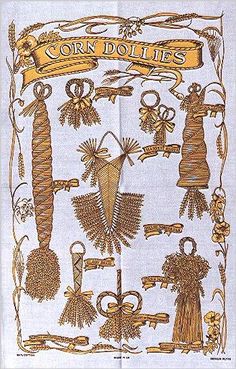 The dolly was made into a shape of an old woman, representing the Crone aspect of the Harvest Goddess. She was drenched in water as a further propitiation to the Gods and to ensure that plenty of rain would feed the harvest to come. Different areas had different styles of corn dollies.
The dolly was made into a shape of an old woman, representing the Crone aspect of the Harvest Goddess. She was drenched in water as a further propitiation to the Gods and to ensure that plenty of rain would feed the harvest to come. Different areas had different styles of corn dollies.
However, the custom of preserving the spirit of the harvest was not always carried out in such a genteel way. The Phrygians, who lived in central Asia Minor and worshiped the Mother of the Gods, Cybele, carried out a different sort of ceremony.
Their corn dolly was formed from thickly plaited sheaves of corn formed into a tall column. Any stranger found in the vicinity was captured in the belief that his presence there would mean that the spirit of the harvest had possessed his body and caused him to wander into the area. The hapless stranger was then trapped within this cage of corn and then beheaded in the belief that the blood that fell upon the ground contained the valuable “soul” of the crop.
From: The Element Encyclopedia of Secret Signs and Symbols
Pink
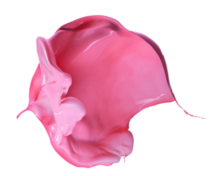 Symbolic Meaning of the Color Pink:
Symbolic Meaning of the Color Pink:
- Femininity
- Innocence
- Good health
- Love
- Patience
Pink is the official color for little girls and represents sugar and spice and everything nice. Pink is the sweet side of the color red and is the color of universal, unconditional love. While the color red stirs up passion, aggression, and action, large amounts of the color pink can actually create physical weakness.
Pink is the ultimate feminine color, both flirty and girlish and innocent at the same time. Pale pink is used as the symbol for a baby girl, just as pale blue is used for baby boys. The use of pink and blue emerged at the turn of the century, the rule being pink for boys, blue for girls. Since pink was a stronger color it was best suited for boys; blue was more delicate and dainty and best for girls. And in 1921, the Women’s Institute for Domestic Science in Pennsylvania endorsed pink for boys, blue for girls. This feminine angle is why the color pink has been adopted as a symbol of gay pride.
The pink ribbon is an international symbol of breast cancer awareness. Pink ribbons, and the color pink in general, identify the wearer or promoter with the breast cancer brand and express moral support for women with breast cancer. Pink ribbons are most commonly seen during National Breast Cancer Awareness Month.
Other meanings associated with the color pink:
- The phrase “in the pink” means healthy.
- The expression “tickled pink” means being happy, content.
- The saying “pink collar” refers to a female office worker, often used in a derogatory fashion.
- The word “pink” means to cut, notch, or make a zigzag.
- A “pink slip” is a notice that you’ve been fired from your job.
- A “pinko” is a person who is extremely liberal, a socialist or a communist.
Collected from various sources
Orange
 The Symbolic Meanings of the Color Orange:
The Symbolic Meanings of the Color Orange:
- Balance between spirit and sexuality
- Fertility and yet virginity
- Energy
- The Sun
- Like yellow, orange is believed to be an appetite stimulant
While orange is a common color associated with summer and the hot sun, often associated with being a main color of harvest and autumn due to the changing color of the leaves and pumpkins. When used alongside the color black, orange brings up associations with Halloween. With the change in color of the autumn leaves, orange often represents the changing seasons. Because of it’s association with change, orange is often used as a transitional color or to represent a transition or change of some kind.
Orange has two aspects that we see time and time again, pivoting between the material and spiritual worlds, which is not surprising given that the color itself is a balance between red and yellow. As such, it represents the second chakra, the first being red, and the third, yellow.
Orange is a vibrant, cheerful color that definitely lifts the spirits. The orange blossom is the traditional flower for brides because the fruit and the flower can appear on the orange tree at the same time, hence the virginity / fertility symbolism.
Similarly a Hindu bride has an orange powder smeared on her forehead once she is married, a sign of her status. Hindu places of worship are indicated by an orange flag or banner, which is replaced once a year in a colorful and effusive ceremony.
The color orange is closely associated with the Netherlands originally because of the Dutch ruling dynasty, the House of Orange. Dutch farmers who gave the world the first orange carrot further cemented the association. It might be impossible to associate the carrot with any other color these days but originally they came in black, red, or purple and were a much more bitter vegetable than the modern varieties. By the 1700’s, the Dutch had succeeded in hybridizing pale yellow carrots with red ones. It might be a coincidence, but a recent UNICEF survey showed Dutch children to be the happiest in Europe; given that happiness is one of the symbolic associations with the color orange, could there be a link?
Orange associations with other colors:
- Orange and blue work well together because they are complimentary colors. The orange and blue color palettes are commonly used for representations of play and summer fun, depicting both the hot, summer sun and the cool, refreshing water.
- Orange when combined with yellow conjures up feelings of heat and fire, as well as fresh fruit.
- When combined with the color green, the colors elicit feelings of adventure and tropical destinations.
Collected from various sources
Saffron
Symbolic Meanings of the Color Saffron:
- Spirituality
- Holiness
- Good Fortune
This color is named for the saffron crocuses whose stigmata create the color. The harvesting of these delicate plant parts is a labor-intensive and time-critical matter and so the actual dye is costly to produce. Saffron is an extremely auspicious color for Buddhists, Hindus, Jains, and Sikhs. A saffron or orange banner indicates a place of spiritual worship.
The foreheads of Hindu deities are daubed with saffron paste to denote their celestial status, and although the Hindu pantheon is vast and complex, the use of saffron is a unifying factor across the many different manifestations of the faith.
Saffron is paler and more golden than true orange, and is said to be the color of wisdom, the rising Sun, and of Mother Earth.
Source: The Element Encyclopedia of Secret Signs and Symbols
Red
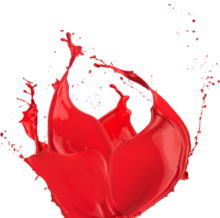 Symbolic Meanings of the Color Red:
Symbolic Meanings of the Color Red:
- Vitality and Life Force
- Fire
- The Sun
- The South
- Blood
- Good Luck and Prosperity
- Power and Authority
- Masculine Energy
- War and Anger
- Passion
- Energy
- Sexuality
One of the three primary colors, bright red pops out of whatever environment it happens to be in and grabs our attention more than any other color. Moreover, it is the first actual color that is seen by babies.
Because it has a lower vibrational frequency than any other color in our visible spectrum, it is associated with the Root Chakra and symbolizes passion, sexuality, fertility and animal urges. Red-light districts are so called because of the dim red shades of the prostitutes’ quarters.
Red is the color of blood, which means that it is associated with the life-forces and vitality. Hunters would daub themselves in the red blood of the kill, which they believed would give them empathy with the spirit of the animal. Red is also the color of fire, the Sun and the Southern direction.
The word for “magic,” in German is directly linked to the word for “red ochre.” A recent archaeological discovery provided unusual evidence of the reverence in which the color was held by early man. Lumps of red ochre, as well as tools stained with the substance, were found in early graves in an Israeli cave, indicating its importance as a symbol of vitality, life, and resurrection.
Pure colors used to be very difficult and expensive to produce, and so red cloth was used by people in positions of power, such as the monarchy and the clergy. Byzantine emperors were dressed from head to food in red. In Rome, red was the color of nobles and generals, and the Holy Roman Church still dresses its cardinals in pure, bright, cardinal red. To roll out the red carpet for someone is to honor their presence.
Red is the color of protection and has been viewed as such for at least the last 2000 years. Amulets made from rubies or garnets were far more valuable than any other kind, able to make the wearer invincible.
 And then there is the red planet. Mars has a preponderance of iron oxide in its soil that gives it a red appearance that is clearly visible to the naked eye. This color is partially responsible for its association with war and warriors.
And then there is the red planet. Mars has a preponderance of iron oxide in its soil that gives it a red appearance that is clearly visible to the naked eye. This color is partially responsible for its association with war and warriors.
In India and China, red is the traditional color for weddings. Indian brides wear saris of red or pink, and the Chinese happy couple will be surrounded by a veritable sea of red, clothing, souvenirs, and gifts. Even the home of the bride and groom are decorated with red banners and ribbons. Roman brides, too, favored red for their wedding veil, which was called a flammeum. This tradition is shared by modern Greek brides.
The red envelope is a popular Chinese symbol for happiness. It has been a long-standing belief that red envelopes bring happiness, good luck and prosperity. In fact the color red stands for all these, in itself. So the person gifting these wishes the person receiving it to be bestowed with all these things.
By contrast, red is the color worn by mourners in South Africa. Red was also the color of the communist revolution in Russia, and so politically it is associated with communist causes.
In Ancient Egypt red was synonymous with evil, because it was the color of the God Seth, who haunted the arid desert places, the personification of destruction. Seth was called the “Red God,” and an Egyptian charm of the time goes like this:
Oh, Isis, deliver me from the hands of bad, evil, red things!
Similarly, in Christian symbolism, the Devil is sometimes depicted as a red creature. Like Seth, he also has a predilection for scorched places.
In alchemy, the Red Stone is mercuric sulfide, a compound of sulfur and mercury that is also called vermilion. The creation of vermilion was a very important primary stage in the process of making the Philosopher’s Stone, which is itself disguised as the Red Lion, since this elusive substance was characterized by turning red in its final stage.
Other meanings associated with the color red:
- When the color green and the color red are combined, they traditionally represent Christmas and the joyous holiday season.
- Red is often associated with the fortieth wedding anniversary, as the red ruby is the traditional fortieth wedding anniversary gift.
- Barns and large structures have been traditionally painted red because the red paint was the most inexpensive paint to purchase and the easiest paint to manufacture.
- A red rose without thorns is a symbol of passion, love, and romance.
- A red rose with thorns typically exemplifies the struggle and challenges associated with journey of love, meaning that it can be both joyous, fulfilling and delicate, as well as painful and cruel.
- The saying “in the red” means losing money, no money, or overdrawing your account at the bank and is thought to come from the feelings of stress and anxiousness and the physical symptoms they cause such as elevated blood pressure and often anger or danger.
- The term “red herring” is used when referencing something that is deceiving, dishonest, or distracting from the truth.
- The phrase “paint the town red” is associated with celebration, partying, abandon, fun, and excitement.
- The expression “seeing red” is thought to be based on the physical characteristic of anger, including redness of the cheeks, physical exertion, and elevated blood pressure.
- The term “red eye” is associated with overnight airline flights due to the perceived lack of sleep passengers receive and the appearance of red in the whites of their eyes as a result.
- The saying “red carpet treatment” refers to making someone feel special and pampered as if they are a VIP or high profile person.
- The phrase “red flag” is often used in reference to a warning of danger, problems, fighting, and war.
Collected from various sources.
Purple
 Symbolic Meanings of the Color Purple:
Symbolic Meanings of the Color Purple:
- Royalty and Pomp
- Power
- Wealth
- Majesty
- Magick
Purple (and also indigo) is the color associated with the sixth chakra. The sixth chakra, Ajna, is in the area of the third eye, which is found in the space between the eyebrows. This is your center of intuition.
Since it was first discovered, purple has been the color of choice to denote wealth and power. Emperors, kings, and the more powerful members of the clergy – such as bishops – choose the color as a way of defining their status. This is because the dye itself was originally available from one source and one source only; the secretions of a certain gland of an unfortunate sea snail called the Murex Brandaris.
Therefore, purple was extremely costly to produce and strictly the color of those who could afford it, since the dye itself was more expensive even than gold. The most popular shade of the color is called Tyrian Purple ( named for the city of Tyre, where it was manufactured).
Heracles’ dog, which had a predilection for snacking on the snails he found along the seashore, is credited with having discovered the dye after his owner noticed the purple staining around his mouth. It is likely, however, that the Minoans on Crete discovered the purple pigment quite some time before Heracles’ dog trotted into the picture.
If the theory of the Minoan discovery is true then the rare purple dye has been with us for at least 3500 years, so its associations with all things glorious and splendid are well embedded into the human psyche even with the advent of synthetic dye alternatives.
It is said that purple was a favorite color of Cleopatra. It has continued to be a color associated with royalty, and with high honor, such as the purple heart awarded American soldiers wounded or killed in war. Obviously, purple is a very special color. That is also true in feng shui. In feng shui, there is one color that is suitable in any direction. That color is purple.
Other meanings associated with the color purple:
- The phrase “purple cow” refers to something remarkable, amazing, unique, stand-out, eye-catching, or unusual.
- The term “purple prose” is used in reference to large exaggerations, lies, and highly imaginative writings.
- The expression “purple speech” is used to describe profanity and bad language.
- The saying “purple haze” refers to confusion or euphoria which may be drug-induced.
- In Thailand, purple is the color of mourning for widows.
Collected from various sources
Motley
 Symbolic Meanings of Motley Colors:
Symbolic Meanings of Motley Colors:
- Wealth
- A Chameleon Personality
Not strictly a color as such, but a combination of many other colors. The word is generally used to describe cloth or clothing.
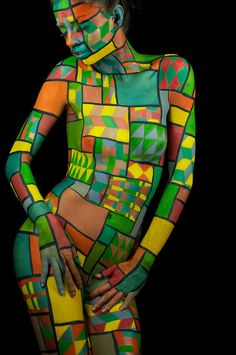 The rainbow nature of motley means that whoever wears it has as many aspects as there are colors, a chameleon personality, and it can indicate the trickster or fool (as worn by the jester, or the fool in the Tarot) as well as kings, emperors, and deities.
The rainbow nature of motley means that whoever wears it has as many aspects as there are colors, a chameleon personality, and it can indicate the trickster or fool (as worn by the jester, or the fool in the Tarot) as well as kings, emperors, and deities.
In the Bible, Joseph’s coat of many colors is the subject of much envy.
Source: Element Encyclopedia of Secret Signs and Symbols
